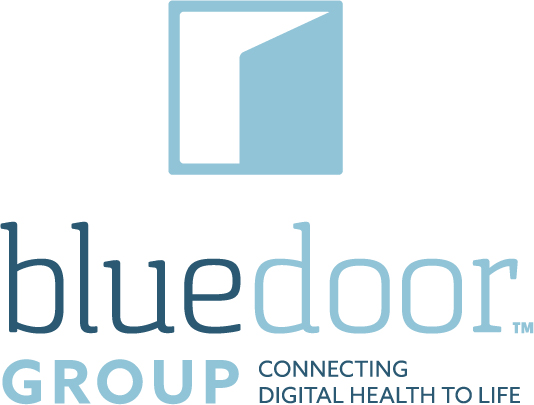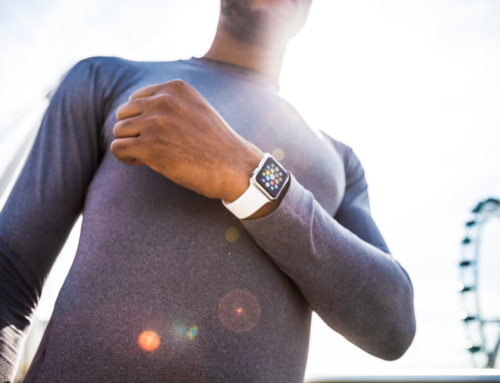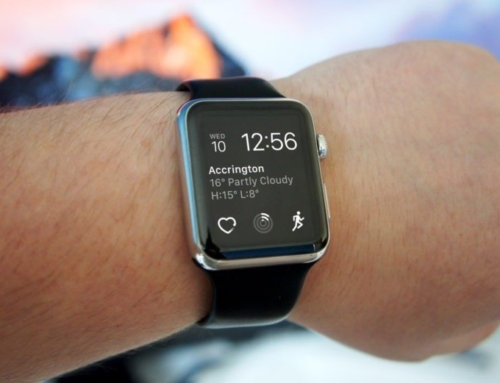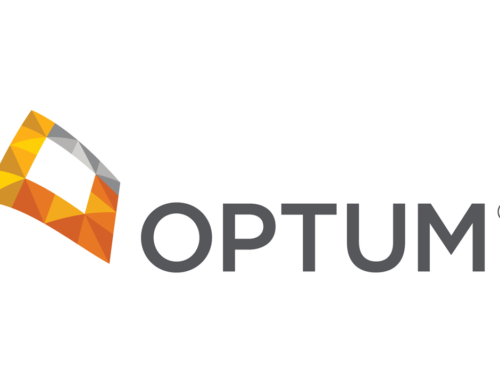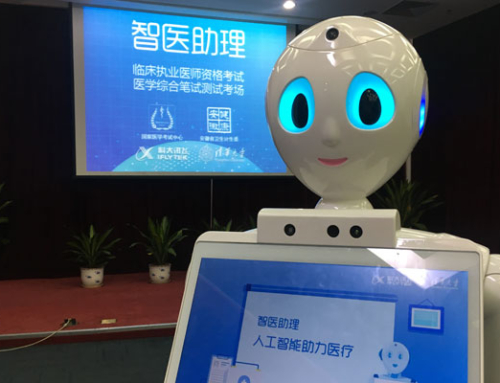By Peter High | Sept. 18, 2017
Under Armour used to be known primarily for its moisture-wicking t-shirts. In the 21 years since the company was established in founder and CEO Kevin Plank’s grandmother’s basement, the company has expanded its product line extensively to include hats, pants, shoes, gloves, bags, and the like.
In recent years, the company has made three strategic acquisitions that will continue to reshape the company. With the acquisitions of MapMyFitness, EndoMondo, and MyFitnessPal, the company has become the largest digital health and fitness community in the world. I recently spoke with Under Armour’s Chief Technology Officer Paul Fipps, who leads this digital transformation of the company. He sees the future as a combination of the physical and the digital, where one’s clothing and accessories provide better information on heart rates and sleep quality.
(To read future stories about people who are shaping the technology landscape, please follow me on Twitter @PeterAHigh.)
Peter High: Under Armour calls itself a digital health and fitness community. Please explain that concept and the role you play as Chief Technology Officer.
Paul Fipps: People move fast in the digital world. They get more information, have more choice, and find more deals. A downside to all of this information is people are bombarded with messages from companies that do not understand them. This happens everywhere in the digital world: on our mobile platforms, social platforms, and on the web. At Under Armour, we believe you need to approach consumers like a hotel concierge who deeply knows his or her guests. A concierge knows all of your preferences and the context. You have an incredible experience because it is highly personalized and memorable. At Under Armour, this experience means creating products that are relevant to our customers on both a personal and community level.
Another thing we recognize is that people spend a lot of time on their smartphones; they are on their smartphones as much as they watch TV. Smartphones are where consumers expect you to meet them. We recently acquired three companies that help us understand our athletes better and make it easier for us to connect with them. Our acquisitions of MapMyFitness, EndoMondo, and MyFitnessPal made us the largest digital health and fitness community in the world. These apps produce a vast amount of data; 215 million people have downloaded one of our apps. People tell us how much they sleep, how much they eat, how much they workout, and the types of workouts they do. We also get data from brand interactions, which are when someone comes into our retail stores, visits our e-commerce site, or interacts with us in some way that we can track. By combining the data from the apps with the brand interaction data, we can understand buying decisions. More importantly, we understand the behavior behind the buying decisions. That has been a huge success for us. We are creating a new digital experience for our athletes by combining connected fitness and our e-commerce engine and our global technology platform. It is game changing for us and our athletes. That is my primary role as Chief Technology Officer of Under Armour.
High: You provided a great overview of where things stand now and customers’ expectations for speed, customization, and transparency. Can you provide an example?
Fipps: We have done a lot of research on sleep over the past few years. In fact, we just finished a research study with Johns Hopkins on the science of sleep. For the past 18 months, we have worked closely with Tom Brady, who attributes a lot of his success to sleep. The information we gained from those two projects, and additional research with other premier athletes, provided us with insights we used to create our TB12 sleep product. This product lets people track their sleep so they can take steps to improve the quality of their sleep. This, in turn, will allow them to recover faster and perform better. The experience is about the physical and the digital, not just one or the other.
High: In recent years, Under Armour has made a big push internationally. What role did technology play in the global expansion?
Fipps: On the business side, as we grew quickly outside of North America, we had to create a technology organization that could support our growth. Over the past couple of years, we built a global operating model in the IT organization, while also building out capabilities we can grow and scale into. It is a different strategy for us. For instance, we recently implemented enterprise resource planning software from SAP, with the fashion management solution, that is designed to support one instance of SAP’s enterprise resource planning in the cloud, for the whole globe. This push and enabling foundational platforms and capabilities we can grow into, has allowed us to start catching up, from an infrastructure standpoint, in our new international regions and markets.
On the customer facing side, it is important that we localize experiences. We are redeveloping MapMyRun so that it couples with our new version of the connected shoe, which will launch in spring to summer of 2018. We want to mirror that combination well wherever we have athletes. We have to take the same app experience and make it great for the Chinese consumer, for example.
High: You have referenced your ecosystem and your partnerships with Johns Hopkins and athletes who wear Under Armour. What are some of the philosophical touch points you return to as you think about developing an ecosystem?
Fipps: Under Armour has always made big bets with big partners. One of our mantras is finding partners who augment our capabilities and can help us grow and scale. That is how we think about our partners in every part of our business, whether it is in the digital landscape, the physical space, or the technology components. We have great partnerships with large companies that help us design and develop our footwear and apparel. We also have partners who we innovate with, both in the retail and technology space. For us, the most important thing is finding the partners who can best help us service are athletes.
High: There is a brutal war for technology talent, especially for younger workers. What cultural attributes have helped Under Armour attract and retain millennial workers?
Fipps: We have learned millennials want purpose driven work. Our mission is not about selling shirts and shoes. Our mission is to make all athletes better. How you define yourself as an athlete is up to the individual. You are an athlete if you want to live a healthier lifestyle and improve. You can take that all the way to the pinnacle, which is being a professional athlete. All of us are on that spectrum. Our key messages for talent are: Come to make people’s lives better. Come and help people live a healthier lifestyle. Come and help people win. Millennials respond to the purpose driven work we do, in fact, the average age of employees is 30.
We also have a well-developed intern program, called Under Armour’s Rookie Program. It was just rated #1 for internship programs by the career site WayUp. Our program is highly competitive and extends offers to less than 1 percent of the total applicants. Computer Science is one of the top majors among applicants to the Rookie Program. If we think a rookie is a good fit for our team, we move quickly to review and interview them as potential teammates because we know they are highly qualified if they made it into our intern program. We also know that if we do not make room for them, and allow space for them to graduate, someone else will. Since 2007, we have hired over 200 former rookies as fulltime teammates into entry-level roles across the company ranging from positions in design, supply chain, IT, and Connected Fitness to Finance, Marketing, and Strategy.
High: An interesting aspect of your career is that you have had dual roles at several organizations. At Charmer Sunbelt Group, you were the CIO and the VP of Business Services, for instance. At Under Armour, you have led Supply Chain, held Operations leadership positions, CIO responsibilities, and now you are the CTO. Having had responsibility for a number of topics in concentric circles around technology or related fields, how have you drawn insights from one arena and applied them to another?
Fipps: I am fortunate to have had a variety of opportunities and challenges. I started my career in software development. I wrote code, developed custom software, and wrote additional software for off-the-shelf packages. At Charmer SunBelt Group, my first role was leading a team of software developers. I did that for a couple of years and then got into project management. Sometimes, timing is everything. Right as I was completing a big task in project management, my boss came to me and said, “We just bought this other company in Maryland, we would like you be the product manager for the merger.” It was a $400 million merger, I was 25 or 26, it could have gone either way. I had amazing mentors and senior-level people helping me. It was a great experience that led to me being selected to lead the transformation of the whole company onto an SAP platform. Part of that strategy was building out a shared services organization; a common set of functions that were built on top of the standardized enterprise resource planning platform. This is not a new concept in 2017, but 10 years ago, in that industry, it had never been done. To take that opportunity, I had to leave technology. Technology had to report to someone else in the organization because I was focused on starting up the operational shared services, which included everything from customer service to sales operations to logistics to inbound customers to payables to payroll. That experience gave me a broad understanding of what it takes to be a general manager. In that role, I was able to apply what I had learned from technology from a discipline standpoint around strategy, operating model, people, and risk management. Translating that over into operational functions was a rewarding experience. Then we brought IT into the shared service organization, and formed the role of CIO and Head of Business Services.
When I joined Under Armour in 2014, they were growing quickly. During my first year, we had $2.3 billion in revenue and were planning to add nearly a billion dollars the next year. I came in with the role of SVP Global Operations, which included a lot of the functions I had at Charmer Sunbelt Group, and one or two new ones. In my first 14 months at Under Armour, I had nothing to do with technology. I built out capabilities, distribution, logistics, sales operations, and customer service, and made sure we could scale and deliver our products to our customers.
In 2015, we reconfigured the leadership team and the CIO role began to report to the CEO, Kevin Plank. Kevin, who is also our founder, asked me to come over from operations and be the CIO. We talked about bringing operations and technology together at that time, but the wise move was for me to focus on the technology organization because there were three large projects that had to be completed. First, there was a lot to done in the global operating model plus. Second, we had to build the energy for a massive enterprise resource planning implementation. Third, we were building what we call the single view of the consumer insight engine, which involved taking the three connected fitness properties we had bought and combining their data with purchase data into a single data platform. I spent 16 to 18 months focused on those projects.
Then, we started to bring Operations and Technology back together. We finished that journey in early 2017. At that point, my role as the CIO and EVP of Global Operations had Technology and essentially all of the Supply Chain functions under it. We probably would have left it like that had we not started thinking about the massive digital opportunity we have. As I mentioned earlier, by combining our connected business platform and our e-commerce engine and our global technology platforms, we have the ability to create an experience that not only enhances the physical product we offer, but also helps us to move faster in the digital world. Throughout my career journey, technology has always given me the ability to understand integration across business processes. Sometimes with other functions you do not have the opportunity to see and learn these connections, it is not in your purview, but in IT, you have to understand how Finance, Operations, Sales, Marketing, Production all work to support each other.
High: You mentioned you joined Under Armour during a period of enormous growth. That is a wonderful opportunity, but it also can present tremendous challenges because you must ensure that you maintain the entrepreneurial spirit that led to the growth, while also maturing and scaling the organization for current and future states. What opportunities and challenges did you focus on first?
Fipps: To support rapid growth, all leaders, including myself, are susceptible to using the solution you can get into the fastest. However, if you build iteratively, you end up with a collection of systems that are not well integrated. You know this collection cannot sustain forever and you should be building capabilities you can grow into. Since Under Armour was of a size and scale, and had the funds, people, and resources to do a strategic overview of our systems landscape, this is where we started. Once we were aligned on a strategic level, we figured out, from a technology standpoint point, the resources and skill sets we needed. Some we had to recruit, but there were also teammates who had been here for quite some time who we educated in our new way of working. That was the first thing we tackled, putting together the strategy and roadmap that would support a fast-paced growth company for the long term. An important component of our strategy was implementing a new enterprise resource planning system; we did not upgrade the old. It was so complex we were better off going into a new and simplified world. The technology exists where you can do that today, but that was not always the case. Our mantra was running the business more simply, but also in more scalable way.
A second part of the strategy, recognizing that this is a long journey, was driving business value along the way. This is where we used the single view of the consumer, what we call our consumer insight engine. With big data analytics, you can iterate and learn quickly because test and learn cycles are relatively easy; especially when compared to something like doing a massive ERP for your core business. Using data analytics, we experimented in different ways and added business value along the way. In the beginning, at least every two months, we would publish a new capability in our big data platform. Toward the end, the cycle was much faster, every two to three weeks. The effect of this was that functionally, across the organization, everybody felt like we were getting real business value out of one part while we were building along this other journey.
High: As you look to the next two or three years, what are some other trends that particularly excite you?
Fipps: The combination of physical and digital. As I mentioned, we are on our third iteration of connected footwear; we learned a lot from our first two launches. We are further developing the app experience and the footwear to work more closely together to deliver a great experience for our athletes. I am also excited about where sleep and sleepwear will go as people get more interested in measuring the quality of their sleep, because of the importance it has to their health. The combination of fitness product, sleep product, nutrition product, and other areas, both digital and physical, is a trend I am excited about. We are leading and driving those trends. From a technology trend standpoint, machine learning and AI are game changers. Voice interaction will ease the friction of ordering and getting information, from whatever device you use. The technology is pretty much nailed at this point, now it is about integrating it in the right way so people feel comfortable interacting with their devices through voice. We see opportunities with voice around coaching and many other areas as well. We are interested in trends that give us insight and information about our community of athletes. We value them and want to do well by them.
Peter High is President of Metis Strategy, a business and IT advisory firm. His latest book is Implementing World Class IT Strategy. He is also the author of World Class IT: Why Businesses Succeed When IT Triumphs. Peter moderates the Forum on World Class IT podcast series. He speaks at conferences around the world. Follow him on Twitter @PeterAHigh.
